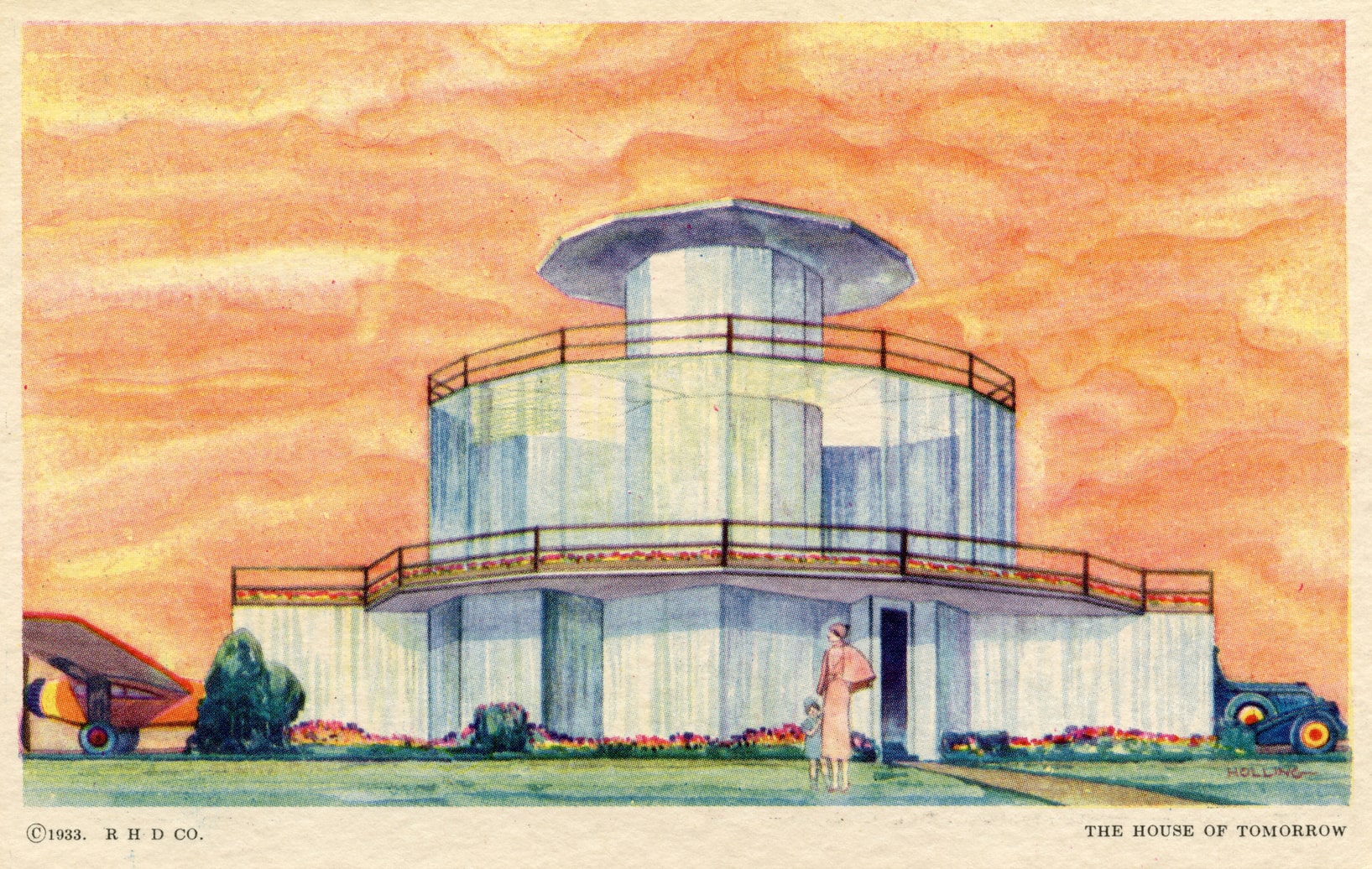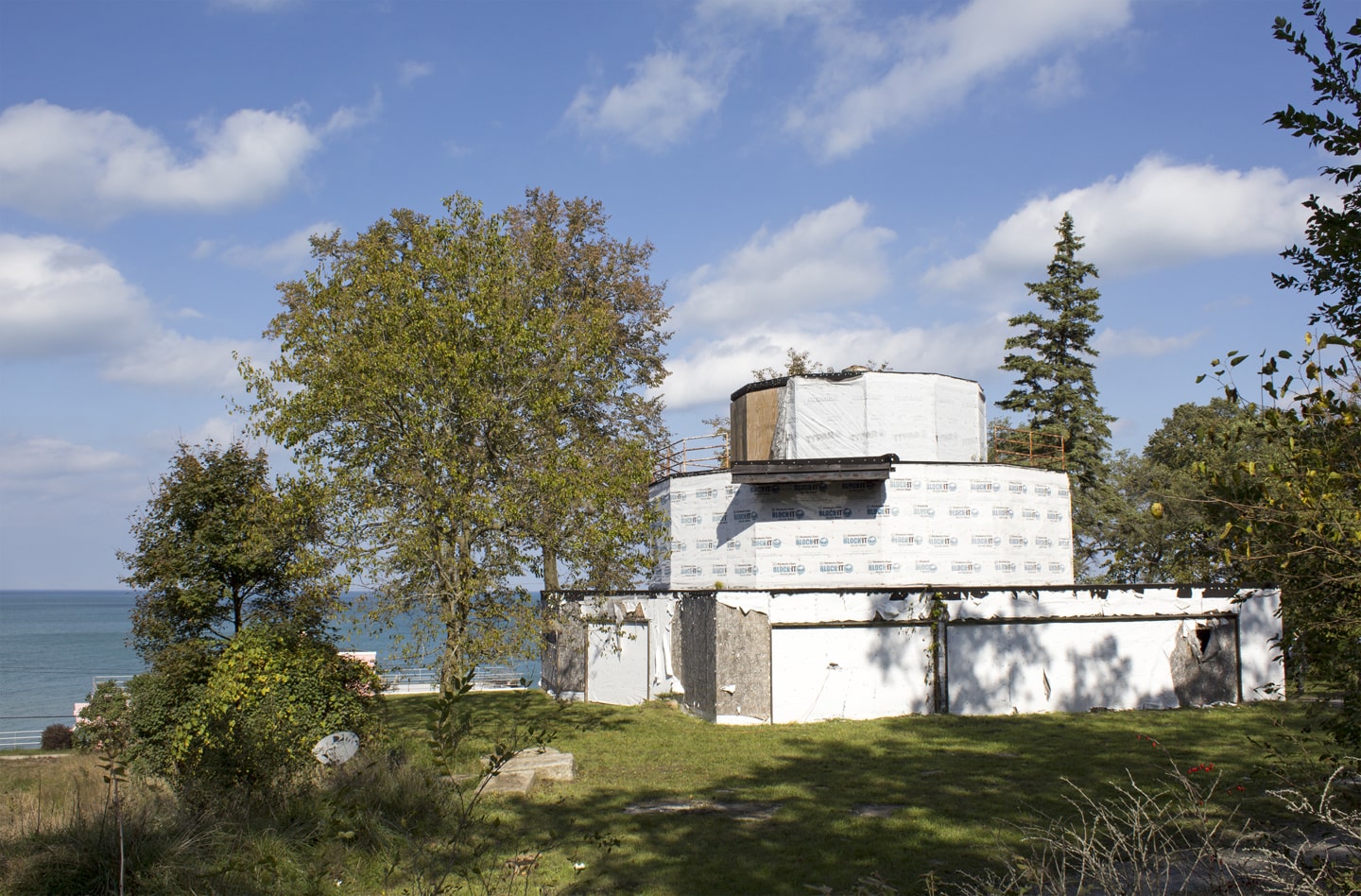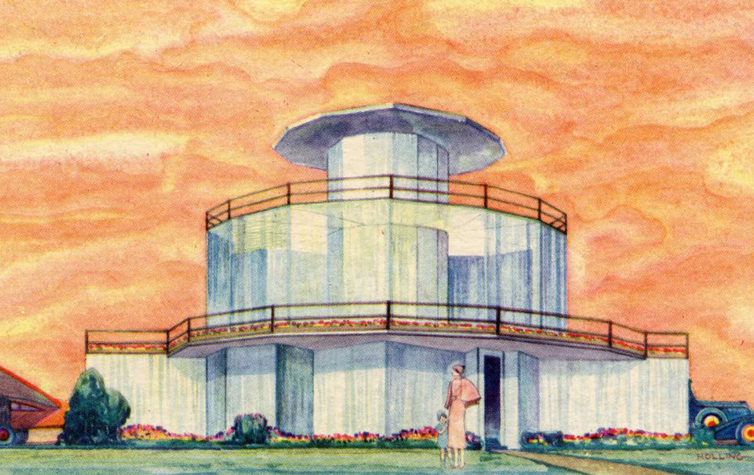
A modern preservation victory! The House of Tomorrow, built in 1933, has been named a National Treasure by The National Trust for Historic Preservation.
“Widely regarded as one of the most innovative and influential houses in modern architectural design, the House of Tomorrow was named a National Treasure by the National Trust for Historic Preservation,” states a joint press release from the National Trust for Historic Preservation and Indiana Landmarks.
“Despite its recognition as a forerunner of both Midcentury Modern home design and the solar house movement, the House of Tomorrow is currently empty and deteriorating. National Treasure designation, along with a plan for restoring it, could give new life to the House of Tomorrow while also becoming a national model for how to preserve thousands of other historic properties across the country.”

The 1933 World’s Fair
From 1933 to 1934, the House of Tomorrow was displayed at the Century of Progress Exhibition at the World’s Fair in Chicago, Illinois. With a ticket cost of 10 cents, 1.2 million attendees wandered through the home that had been designed by Chicago architect George Fred Keck.
Dubbed “America’s First Glass House” by the media, Keck focused on the fair’s theme of science and innovation by designing an entirely new way to live. An “iceless” refrigerator, the first-ever General Electric dishwasher and an innovative open floor plan were just a few of the modern conveniences introduced. Set amid the grim reality of the Great Depression, Keck truly believed that these innovations could improve people’s quality of life.
“At a time when millions of Americans were out of work and the nation was facing enormous economic challenges, the House of Tomorrow was a source of hope for a better future,” said David J. Brown, executive vice president of the National Trust for Historic Preservation. “Keck’s groundbreaking design, along with futuristic household amenities at the time like central air and electric refrigerators, reflected a central theme of the Century of Progress—the power of science and technology to dramatically improve people’s lives.”
Architectural Significance
Aside from predating Mies van der Rohe’s Farnsworth House and Philip Johnson’s Glass House, other firsts include its use of solar energy for provision of heat as well as an attached garage with a push-button entry. While these innovations are not so new now, Keck’s inclusion of an airplane hangar remains futuristic.
“The House of Tomorrow…is one of the true early monuments of American modernism, brimming over with a uniquely American idealism and earnestness about the twentieth century. George Fred Keck was…interested in casting his net wide and demonstrating how future architecture would present new ideas about technology, about space, about materials. He put all of this together into a whole that is truly one of a kind,” says architecture critic Paul Goldberger.
At the fair’s closure, the House of Tomorrow as well as several other homes from the exhibit were relocated to Beverly Shores, Indiana. All remained in private hands until the land they were relocated to became part of the Indiana Dunes National Lakeshore, a unit of the National Park Service.
Hope for The House of Tomorrow
Now, 83 years since the 10 cent tickets were first sold, Indiana Landmarks is raising money to fully restore the House of Tomorrow, which the organization is leasing from the National Park Service. According to the press release, the house will then be subleased for residential use. “At a time when the National Park Service is facing a maintenance backlog of approximately $12 billion, creative new approaches to maintaining cultural resources in our nation’s parks are essential,” it states.
“Our goal is to preserve this outstanding building and raise awareness and appreciation of the House of Tomorrow, the architect George Fred Keck, and the Century of Progress, both regionally and nationally, and to raise the money to make this possible” says Marsh Davis, president of Indiana Landmarks. “To guide us through the restoration design process, we have enlisted the services of Chicago architect and former Indiana Landmarks board member Bill Latoza. Although the timetable will depend on fundraising, we hope to get the restoration underway by spring 2017,” he adds.
For more, visit The National Trust for Historic Preservation and Indiana Landmarks.













